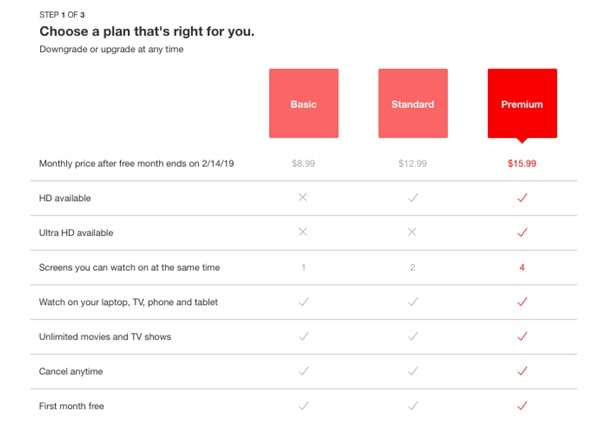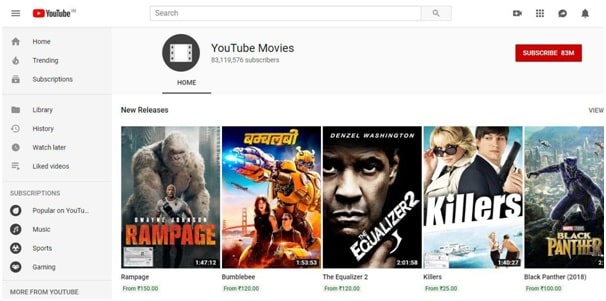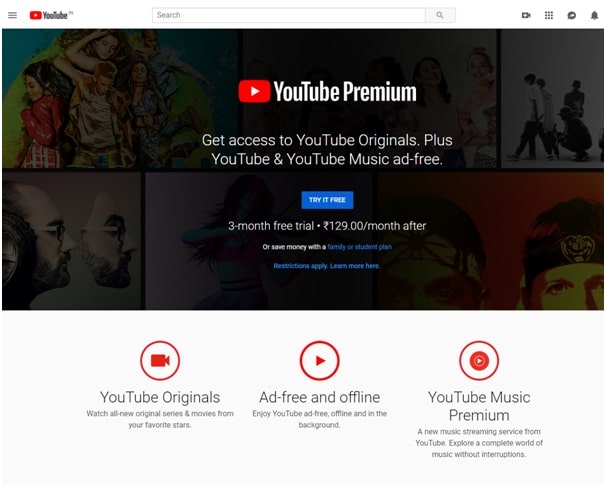
Online viewers have more media content to choose from than before and certainly more convenient ways to watch it. Over the last couple of years, we are seeing a boom in the video streaming industry and the transformation of the VOD sites as alternate TV platforms. Brands like Netflix, Hulu, Google TV, Apple’s iTV are competing to get a slice of something that is the largest chunk of the media business.
Enhanced user experience drives the growth of video on demand services
The major reason behind an increasing number of people prefer on demand video content is that it facilitates multi-user viewing on various devices at the same time. For example, a Netflix account allows 4-5 people to access the platform on various devices at the same time to view different programs.
Another factor that contributed to the popularity of video on demand services is the convenience. VOD platforms allow users to view videos anytime, anywhere, on any device, according to their convenience and special interests.
The increasing use of mobile devices and access to strong Internet connections also have helped users to stay connected with the VOD platforms that eliminate the need to wait to watch their favorite shows online. The availability of all facilities for instant binge-watching is shaping up as a driving force in the digitally connected world where users are relying upon online platforms for entertainment purposes than traditional media consumption channels.
The U.S is expected to continue as a major country owing to the latest VOD innovation
The consumption of VOD content in the United States, especially in the regions of North America is tremendously increasing as people are making a switch from traditional media to digital media. The availability of stable Internet connection along with the increasing number of mobile devices that support the consumption of video on demand content has provided the users with the freedom to access videos at their comfort and convenience.
Mobile devices are the primary channels people choose for overall digital media consumption. Mobile Internet usage in the US also has increased greatly with a significant increase in the number of mobile wireless connections. The rise of VOD players like Netflix, Amazon, Apple TV, and Hulu in the VOD field is the driving force behind the decision of users to cut cords and move to digital media instead.
Video on demand trends that are disrupting the industry
VOD content providers seem to be in a hurry exploiting new opportunities as more people are moving to VOD platforms by cutting cords. With VOD emerging as the primary medium of content consumption and entertainment, the streaming space has become more of a crowded ecosystem than it was a couple of years ago.
Before going into the current VOD trends, let see how does video on demand work? Video on demand is a system that delivers video streaming and allows users to browse and watch videos on demand at their convenience on devices like smartphones, tablets, smart TVs, gaming consoles, etc. With the rise of VOD, viewers are able to personalize their living room experience devoting more time to video streaming services. Video on demand services transmits their content using real-time streaming protocols and offers services via cable TV, directive to broadcast TV services. In the past years, VOD players operating on global marketing have launched diverse and unique video on demand services that have positively impacted their revenue strategies.
Here are the emerging VOD platform trends for 2020 that are essential for market players to sustain in a highly competitive industry. If you are thinking about how to create a video on demand website, adhering to these trends can have a positive impact on your business success.
The rise of hybrid monetization models
A prerequisite for VOD platforms to sustain in the market is to generate revenue. When it comes to revenue models of VOD platforms there are three primary models- Advertisement model (AVOD) like YouTube, subscription (SVOD) model like Netflix and Amazon Prime, and transactional (TVOD) model like iTunes.
The SVOD business model is followed by major VOD platforms like amazon prime, Hulu, and Netflix and is the most popular in terms of revenue. SVOD services allow users to access unlimited content libraries available on the platform for a fee. The major advantage of SVOD is that it is convenient to subscribe and unsubscribe.

The AVOD is another business model that allows users to access the content for free, but with the interruptions of advertisements played in between the videos. This model suits the VOD platform that has a massive audience as it gives more exposure to ads. While AVOD is suited for New players who are looking for establishing a stable customer base, it is not very profitable until you gain a significant number of users. As AVOD is primarily driven by volumes, it takes a while for new businesses to start getting a good amount of revenue.
TVOD, on the other hand, provides a more exclusive viewing experience by allowing users to access the content of their choice by paying a one-time fee to binge-watch their favorite content. Unlike the other 2 business models, TVOD doesn’t function based on volumes. TVOD is more of an al-a-carte service where your users get exactly what they want and have to pay just for that. Nothing more, nothing less.

While these are the 3 major monetization models, another popular type is the hybrid revenue model that combines the combination of two or more basic revenue models like AVOD, SVOD OR TVOD. YouTube is the perfect example of a hybrid model where it primarily functions on the freemium model, it also offers pay per view content and premium content to its users.

Rising demand for originals
The year 2018 saw growth in subscription video on demand platforms in terms of the global audience demand for original content. The current trend is that millennials choose a VOD platform on the basis of the exclusive and original content it offers. The first original content from Netflix was House of Cards and from there have been no reasons for Netflix to look back.
Netflix originals receive more audience demand in 2019 than any other originals. With over 62.6% of global demand for its original series, Netflix is the market leader. In 2020, we will see more VOD players coming up with their own original content to captivate their audience.
Content fragmentation
Another big VOD trend for 2020 is the increasing content fragmentation. It started in 2019 when Disney announced that it will be pulling out its Star Wars and Marvel content from Netflix. Most of the content you see on Netflix today will become exclusive to their competitor SVOD streaming platforms. This trend is expected to continue at a fast pace with intensifying competition as influential brands liked Warner media, Apple and Disney launch their own VOD platforms.
Disney has already ended its deal with Netflix and if you want to watch classic Disney movies and shows, you have to subscribe to Disney +. The interesting fact is that Disney was all ready to forgo a yearly revenue of $350 million it received from Netflix in licensing as it realized that the future of VOD is in content creations and direct to customer distribution.
Conclusion
Hope this blog gave you valuable insights on the advancements in the VOD market and the trends are expected to positively impact the evolving VOD industry way beyond 2020. It is entirely up to VOD players how they will run their business in synchronization with the evolving markets. VOD platforms will have to refurbish their user acquisition strategies to stay ahead of the curve and gain a competitive advantage in the industry.
